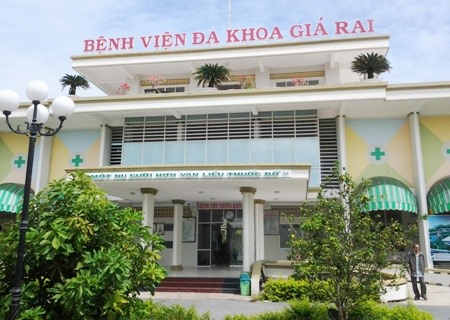 Environment
Environment

Five o’ clock in the afternoon is the time when the Giá Rai General Hospital in the southern province of Bạc Liêu starts to get crowded, not only with inpatients but also visitors who come here to take a stroll.
 |
| Green trees at Giá Rai General Hospital in the southern province of Bạc Liêu. — Photo dantri.com.vn |
HÀ NỘI — At 5pm Giá Rai General Hospital in the southern province of Bạc Liêu starts to get crowded, not only with patients but also with visitors who come here for a stroll.
Without a hint of nervousness on her face, Nguyễn Thị Kim Thu, 30, leisurely walks her daughter around the hospital’s campus. Skipping and talking non-stop after playing at the vegetable garden, Thu’s daughter asks her to take her to a small fish pond located at the back of the hospital, near the medical wastewater treatment zone.
This is the second time Thu has taken her daughter to the hospital. “She likes it, because it has lots of space and doesn’t smell,” Thu told the Sức khỏe & Đời sống (Health & Life) newspaper.
Medical waste and wastewater has a bad reputation, but the Giá Rai General Hospital has turned them into a treat, generating food resources and creating scenic space for its doctors, patients and visitors.
Built in 2014, the hospital’s medical waste treatment system consists of an incinerator and a wastewater treatment zone.
The incinerator was placed facing northeast to avoid catching the southwestern winds that might spread emissions to residential areas. Wastewater, instead of being discharged directly into the environment, is treated and used to raise fish and grow vegetables to improve the meals of staff and patients.
Seven Arapaima fish, each one-metre long, can be seen swimming vigorously in the pond, along with carp and tilapia. When they sense someone nearing the pond, they swim over, raise their heads above the water and open their mouths as if to ask for food.
A lush green vegetable garden filled with morning glory, Malabar spinach, Amaranth and Centella lies adjacent to the pond, watered twice a day by automatic sprinklers. A new batch of vegetables is cultivated after each harvest to ensure continuous fibre supply for staff and patients.
Aiming to make the area of the hospital’s morgue and waste treatment zone more hospitable to patients and visitors, a few simple bandstands and lampposts were installed in these areas. Green trees provide shady, relaxing rest areas.
“Doctors and medical staff often visit the vegetable garden and feed the fish in their free time,” said Huỳnh Văn Dũng, the hospital’s director. “Visitors coming here also help clean up the garbage.”
“Local residents recently helped us asphalt the dirt road in front of the hospital to reduce dust during the dry season and prevent accidents in the rainy season,” he added.
Safe waste
Only an average of 10-20 per cent of medical waste is harmful, according to the Health Environment Management Agency under the Ministry of Health (MoH).
The agency says harmful medical waste is divided into two types, contagious and non-contagious, and should be classified carefully. The former should be put into yellow trash cans, and the latter into black ones. The remaining 80-90 per cent of medical waste is actually domestic waste from daily activities of patients and their families, and non-toxic, expired pharmaceuticals and chemicals.
They should be put into green trash cans, and can be turned into valuable resources similar to what Giá Rai General Hospital did with their wastewater.
Recyclable, non-toxic waste such as paper, plastic, metal and glass is also a valuable resource that should be saved by putting it into white trash cans before delivering them to authorised waste treatment facilities. — VNS




